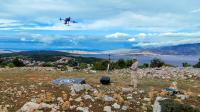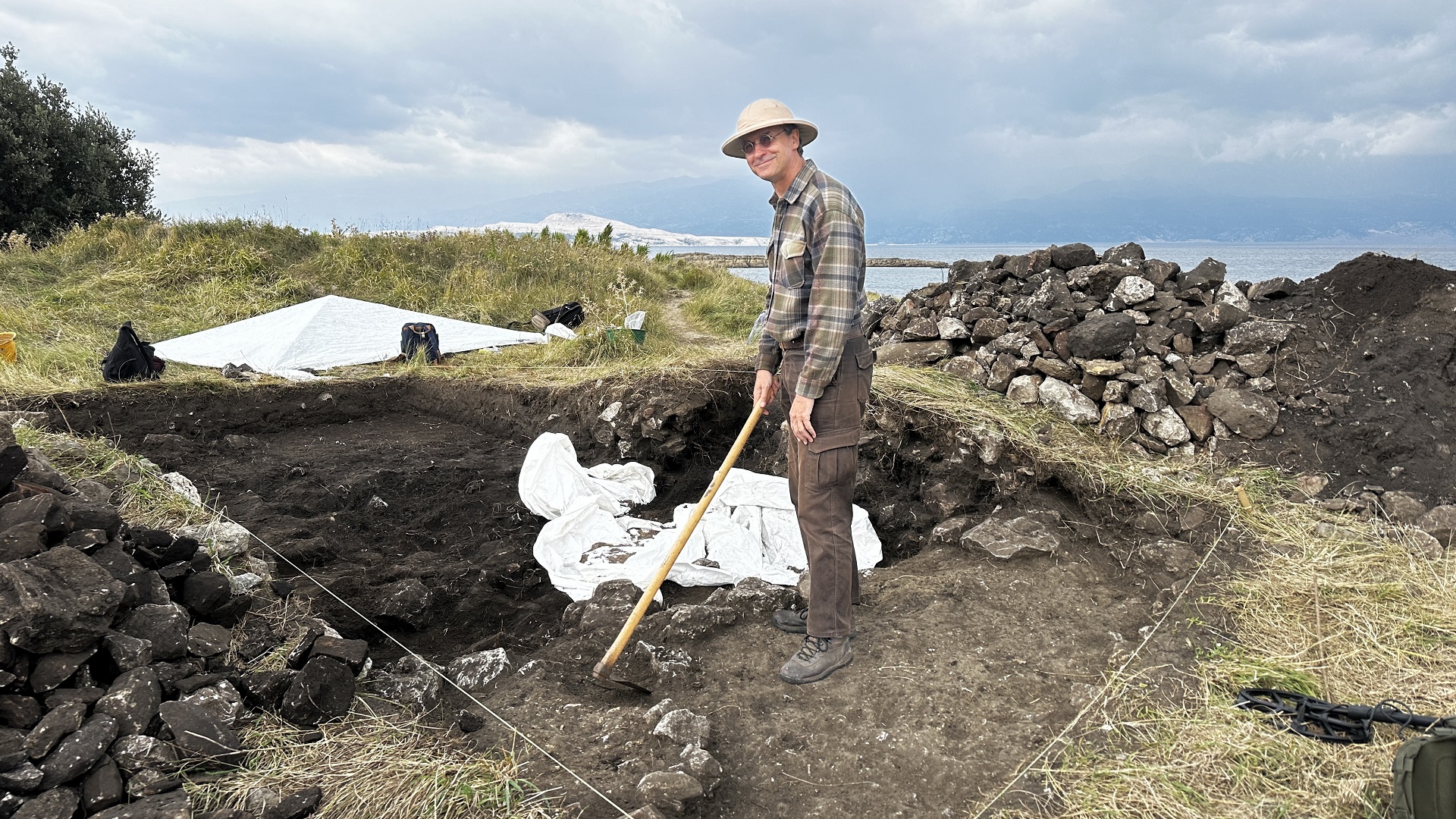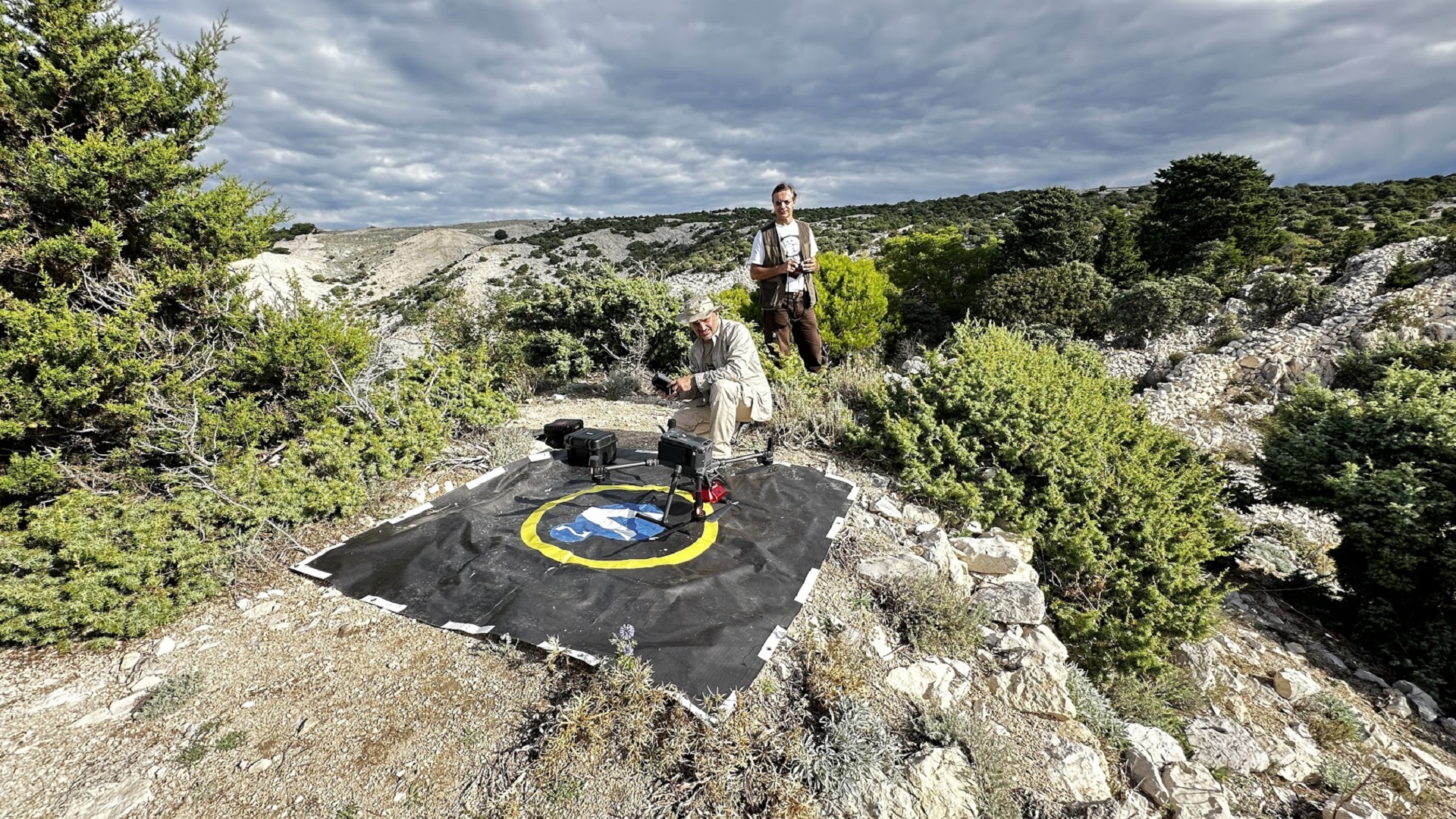Be like Indiana Jones? WUT scientists on archaeological mission
Prof. Robert Głębocki and Paweł Waligóra from the Aviation and Space Research Centre (OBLot) at the Faculty of Power and Aeronautical Engineering of the Warsaw University of Technology took part in an international archaeological expedition to the islands of Rab and Lukovac in Croatia. During their stay, they used their knowledge and skills related to drones and LIDAR technology.
The fieldwork was carried out in cooperation with the Institute of Archaeology of the Cardinal Stefan Wyszyński University, the Institute of Archaeology in Zagreb and the Systemic Risk Research Centre of the University of Warsaw.
As part of this project, aerial archaeology – a modern interdisciplinary field of science that is gaining more and more importance in archaeological research around the world – played a key role. Aerial archaeology involves the use of aerial technologies such as drones, aircraft, and satellites to detect various types of features that manifest archaeological sites. In the case of this expedition, the OBLot team focused on the use of unmanned aerial systems (drones) equipped with LIDAR (Light Detection and Ranging) sensors. LIDAR is a technology that enables the precise scanning of terrain and the creation of three-dimensional surface models. It is particularly useful in archaeology because it allows for the detection of structures hidden under vegetation that are invisible to the naked eye.
“I became an archaeologist thanks to drones,” says Paweł Waligóra, a junior researcher from the Faculty of Power and Aeronautical Engineering. “Actually, since consumer drones first appeared, I have travelled with various archaeologists on their expeditions and supported them in terms of aerial photography.”
“Eventually, years later, Prof. Fabian Welc said that I basically knew everything and, for the sake of formalities, I should do an archaeology diploma,” says Paweł Waligóra. “However, it was only at the Faculty of Power and Aeronautical Engineering, at the Aviation and Space Research Centre, that unlimited opportunities in the field of aerial archaeology no other institution in Poland would have been to provide opened up for me. Here, at the Warsaw University of Technology, I combine my two passions: aviation and archaeology.”
The use of LIDAR drones in aerial archaeology has great advantages over traditional research methods. With this technology, it is possible to carry out large-scale non-invasive surveys in a short period of time, without the need to disturb the area. This tool allows for quick and accurate mapping of terrain, which not only helps to identify potential archaeological sites, but also enables their accurate documentation. This is especially useful in hard-to-reach areas, such as mountainous areas or areas densely covered with vegetation.
Exploring the terrain
During the expedition, the entire island of Lukovac was scanned, where a fortified settlement from late antiquity (6th–7th centuries AD) was discovered. Its remains would have been difficult to detect without air support. Many other sites on the island of Rab were also explored, including the Podšilo valley, full of traces of Roman settlement. Thanks to the use of LIDAR, it was possible to precisely reproduce the terrain and discover structures such as walls, building foundations and old roads, which were completely hidden under vegetation.
“The goal of our expedition this year was to continue the exploration of the island of Lukovac, where – in 2020 – we found many more traces of buildings than those previously known and visible to the naked eye,” says Paweł Waligóra.
“In addition, we explored the inaccessible surroundings of many sites explored during previous expeditions, and we also undertook reconnaissance of potential new sites for future seasons,” he adds. “Thanks to the aerial photographs and LIDAR images obtained, it was possible not only to precisely document the sites, but also to identify areas of the island that have not been explored so far, thanks to which we will be able to precisely place the sites of exploration in the form of traditional archaeological excavations for future seasons.”
Research success between trees and a chasm
One of the most important destinations for aerial archaeology this season was the fortress of St. Cosmas and Damian, dating back to the 6th century AD, located in the mountainous regions of the island of Rab. This structure, due to its hard-to-reach location, has previously been only partially explored. Thanks to precise measurements from the air, it will be possible to create accurate plans of the site and discover new elements that may have been overlooked during traditional surface surveys.
“Documenting the ruins of the fortress of St. Cosmas and Damian, located high in the mountains, was a particularly difficult challenge," explains Paweł Waligóra. “Simply getting up there with a large drone and equipment was quite a feat. On the spot, between trees and the chasm, there was just over a square metre of a relatively even space for take-off and landing. The whole situation was further complicated by strong wind at this altitude.”
Although the main goal of the expedition was drone-based research, the OBLot team was not limited to flights. On days when strong winds prevented unmanned aerial vehicles from working, traditional excavations were carried out on the island of Lukovac.
“This year's research, conducted together with colleagues from other teams, teemed not only with sensational artefacts such as a stone reliquary or a Byzantine belt buckle from the 7th century AD,” says Paweł Waligóra. “Also, the acquired aerial data, although their processing and analysis are still ongoing, already at this stage indicate promising results and interesting sites for further research in future seasons.”
The expedition to the islands of Rab and Lukovac showed the great potential of aerial archaeology in discovering and documenting sites of historical importance. The combination of innovative technologies such as LIDAR and drones with traditional excavations provides key information to help in the better understanding of the role of the Adriatic islands in late antiquity. They will also allow us to learn about the everyday life of the inhabitants of the post-Roman world. The 6th–8th centuries were a period of great changes that influenced the shape of today's Europe. Due to the lack of written sources and scarce archaeological data, knowledge about this era is still very scarce.










